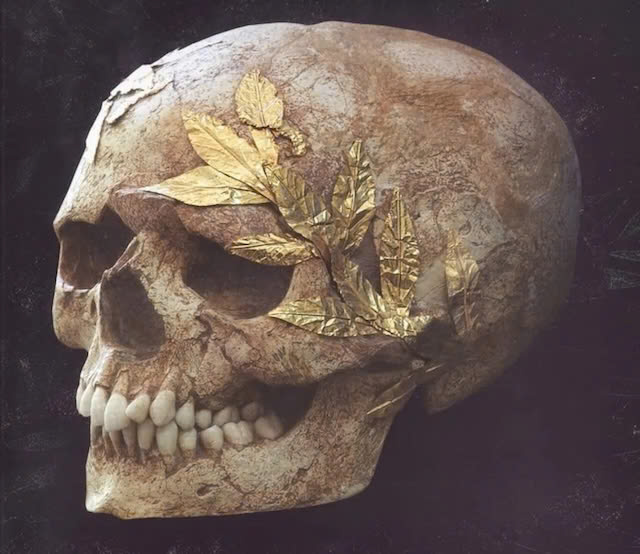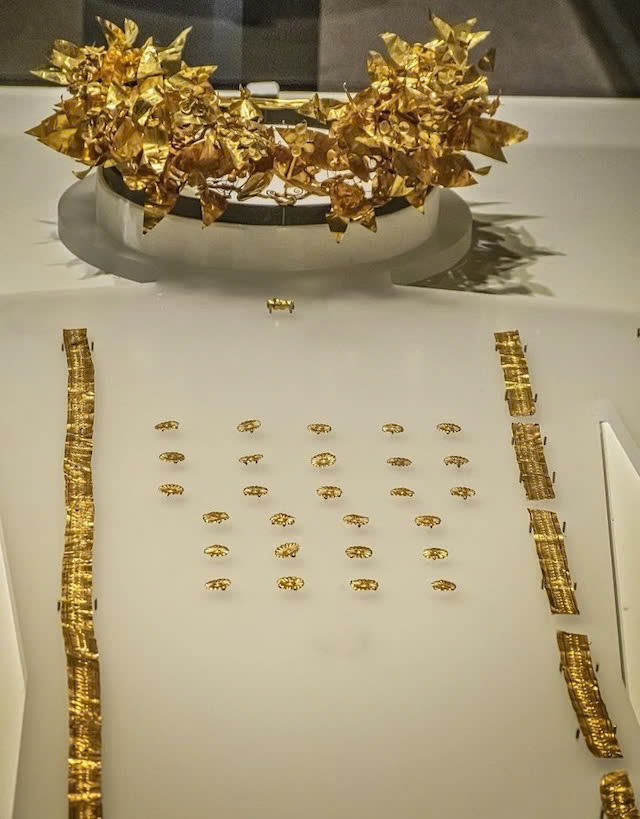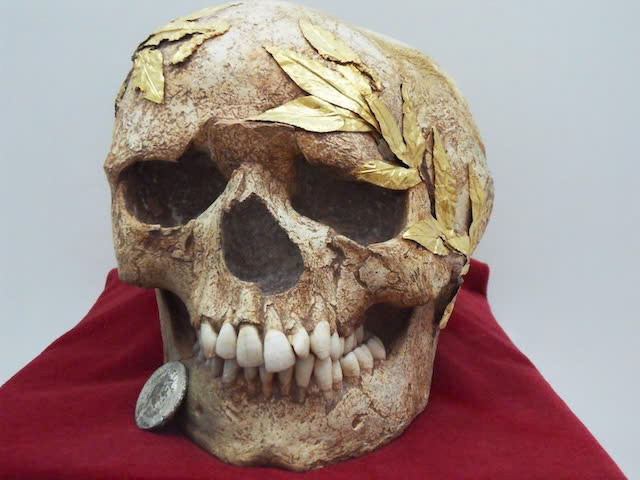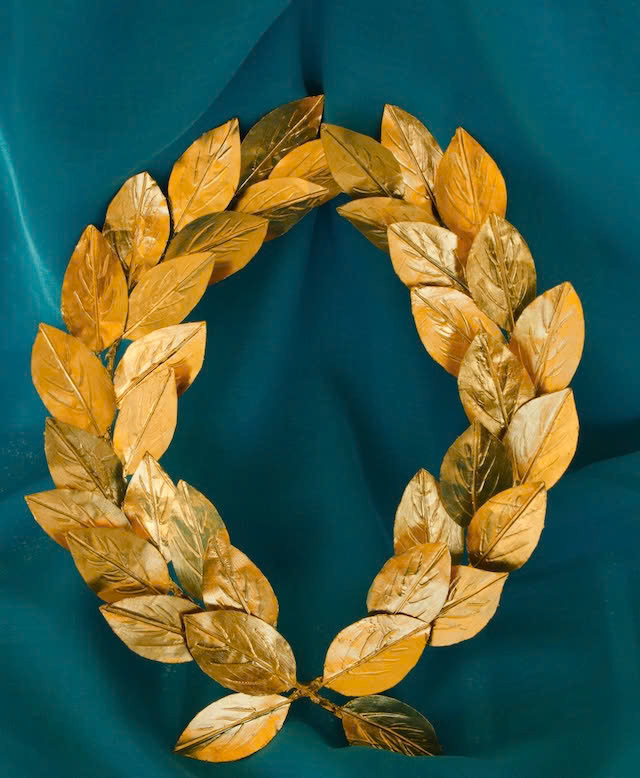In a breathtaking archaeological discovery, a human skull crowned with a golden laurel wreath was unearthed in the ancient city of Lato, Crete, revealing a glimpse of life from 2,500 years ago. This remarkable find not only highlights the opulence and artistic skill of ancient Greek society but also sheds light on their burial practices and beliefs about the afterlife.
A Discovery of Timeless Significance
Found in Lato’s cemetery, the skull is adorned with a detailed golden wreath crafted in the form of laurel branches, symbolizing prestige and honor. Accompanying the wreath, archaeologists discovered a silver coin placed in the skull’s mouth, a customary offering to Charon, the ferryman of Hades, ensuring safe passage for the soul to the afterlife.

The Ancient City of Lato: A Key Cultural Hub
Lato, an important Dorian city-state overlooking the Mirabello Bay in eastern Crete, held both military and religious significance. While the city’s origins stretch further back in time, much of the visible ruins belong to the 5th and 4th centuries BCE. Its strategic location, nestled between two peaks, made it a vital stronghold in the region.
Religious and Cultural Significance
Named after the goddess Leto, mother of the gods Apollo and Artemis, Lato was an important religious center. The city’s own coins, bearing the image of the goddess Eileithyia, reflect its cultural and religious prominence, underscoring its place in ancient Greek heritage.

Symbols of Honor and the Afterlife
The golden wreath found with the skull is much more than a mere ornament; it symbolizes achievement and recognition. Such wreaths, often made from laurel, olive, or myrtle branches, were awarded to victors in athletic competitions, military leaders, and distinguished individuals. The presence of this wreath indicates the deceased may have been a celebrated athlete.

The silver coin placed in the mouth of the deceased reflects the deep-rooted Greek belief in the afterlife. According to myth, a coin was necessary for the soul to pay Charon to cross the River Styx, signifying a belief in the continuation of the soul’s journey beyond death.
Preserving the Legacy
Housed in the Archaeological Museum of Agios Nikolaos, the golden-crowned skull remains an exceptional testament to the sophistication and spiritual beliefs of ancient Greek civilization. While the museum is currently closed for renovation, this incredible artifact continues to offer valuable insights into the past, reminding us of the cultural richness and reverence for life and death in ancient Greece.

This discovery continues to captivate archaeologists and history enthusiasts, serving as a tangible link to our ancient past and underscoring the importance of preserving these extraordinary treasures for future generations.

